Early theoretical foundation of Islamic medication received regarding the Greek and Roman concept of humors, caused by Hippocrates, composing when you look at the century that is fourth. The machine of humors divides peoples fluids into four fundamental kinds: blood, phlegm, yellow bile, and bile that is black. The total amount between every one determines whether a person is sick or well. Clients became depressed, as an example, as a result of a surfeit of black colored bile. The mixture, in Greek, for the words for “black, ” melanin, and “bile, ” khole, could be the base of the word ” that is “melancholy Sanguine, phlegmatic, or choleric temperaments likewise experienced an instability within the other humors. Wellness could possibly be restored by rebalancing these with diet plans and purges, and describes the significance that Islamic medication added to hygiene and diet.
Gifted translators provided the Muslims use of these Greek and Latin texts. Scholars such as for example Yahya ibn Masawayh (known when you look at the western as Ioannis Mesue) and their pupil, Hunayn ibn Ishaq (referred to as Johannitius in Latin) produced over 50 translations alone. Both guys had been Syrian Nestorians, a denomination of Christianity considered heretical within the Roman that is eastern Empire and had been obligated to flee to Persia.
Their capability to talk a few languages—including Greek and Syriac (a Semitic language near to Arabic)—was in sought after. In other towns and cities throughout the brand brand new Islamic world, Muslim clients hired these guys. The caliph Al-Ma’mun associated with Abbasid dynasty in Baghdad place Hunayn ibn Ishaq in control of the translators in the city’s Bayt that is famous al-Hikma or home of Wisdom.
By the 900s, drawing from an evergrowing human body of Greek, Persian, and Sanskrit works translated into Arabic, Islamic medicine quickly became the absolute most advanced in the field. Christians, Jews, Hindus, and scholars from a great many other traditions, looked to Arabic as being a language of technology. Health practitioners of different faiths worked together, debating and learning with Arabic due to the fact typical tongue.
The Abbasid Caliphate of Baghdad enjoyed a lengthy amount of intellectual experimentation that lasted through the entire tenth and 11th hundreds of years. Among its numerous glittering numbers ended up being Al-Razi, understood in Latin as Rhazes, a Persian pharmacologist and doctor who went a medical facility in Baghdad. However the brightest celebrity within the Baghdad firmament ended up being truly the extraordinary Ibn Sina, known within the western as Avicenna. Currently a physician at age 18, their great volume Al-Qanun fi al-Tibb—Canon of Medicine—became one of the more famous medical works of them all, as well as an exercise that is extraordinary the joining together of various procedures and cultures. Avicenna’s make an effort to harmonize the medical methods associated with the Greek thinker Galen because of the philosophy of Aristotle reveals the numerous nature regarding the financial obligation russian bride owed to Muslim scholarship, which failed to simply restore Greek writers, but stimulated brand brand new habits of idea for the hundreds of years ahead. The reconciling of practical technology, thought, and faith ensured Canon had been studied by European medics before the century that is 18th.
Scholarly Functions in Spain
During the westernmost limitations of this Islamic world, Muslim Spain has also been undergoing a time period of scholarly development. By the tenth century, CoМЃrdoba ended up being the largest, many cultured town in European countries, described by some as “the Ornament for the World. ВЂќ The town has also been a great center of research and research.
Crucial volumes in virtually any library that is scientist’s preserved in Córdoba. For example, De materia medica—On healthcare Material—the classic treatise of Dioscorides, written during the time of the emperor Nero in the century that is first, ended up being translated into Arabic in Córdoba, regarding the purchases of Caliph ’Abd al-Rahman III. This study that is practical of medicinal characteristics of flowers and herbs, including a report of cannabis and peppermint, had been now available to more scholars than in the past.
Certainly one of the caliph’s brilliant courtiers, the doctor Al-Zahrawi, also referred to as Abulcasis, put together the Al-Tasrif—The approach to Medicine—a 30-volume encyclopedia that reported records of his along with his colleagues’ experiences in dealing with the unwell and injured: surgical instruments, running practices, pharmacological solutions to prepare pills and medications to guard one’s heart, surgery found in midwifery, cauterizing and repairing wounds, as well as the remedy for headaches. In addition received upon the job of past scholars, such as for example seventh-century Byzantine medic Paul of Aegina. Translated into Latin within the 12th century, Method had been a foundational medical text in European countries well in to the Renaissance.
The 12th century saw the emergence associated with work of this outstanding Ibn Rushd—known in Christendom as Averroës—and the Jewish doctor and thinker Moses Maimonides. Both guys mirror the strong ties between philosophy and medication through the Islamic age that is golden. Averroës, writer of a number of the best commentaries regarding the dark ages on Aristotle and Plato, ended up being additionally individual physician to the caliphs. Moses Maimonides became the personal physician of Saladin, the Muslim champ from the Crusaders. Among Maimonides’s many works ended up being their Moreh Nevukhim, or Guide for the Perplexed, a masterwork wanting to get together again spiritual belief with philosophical inquiry.
